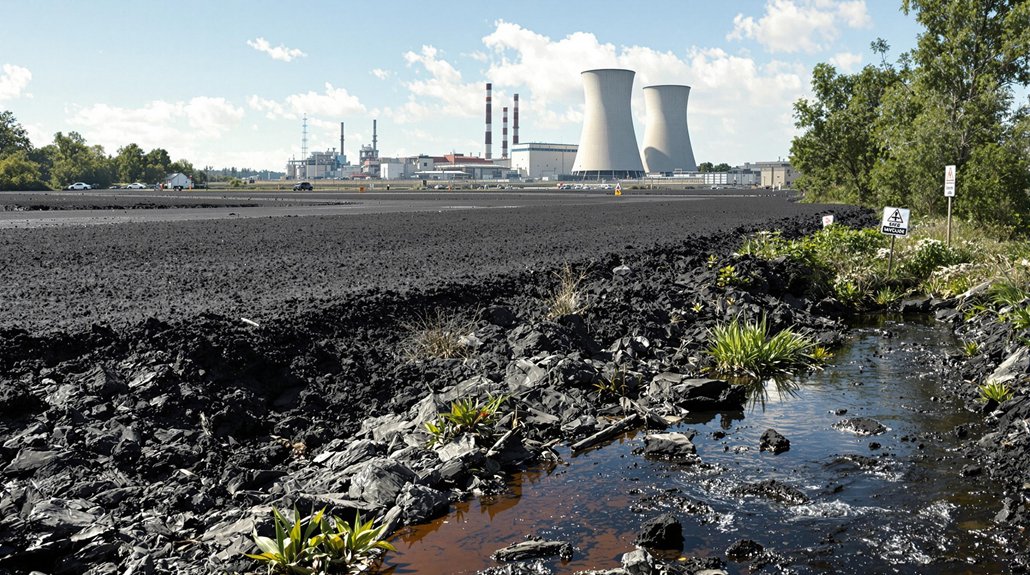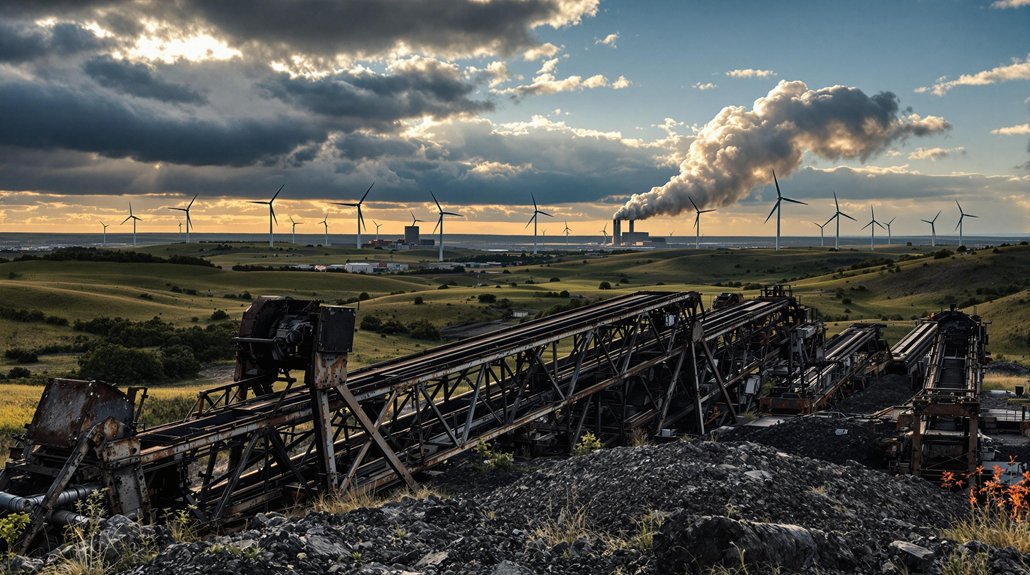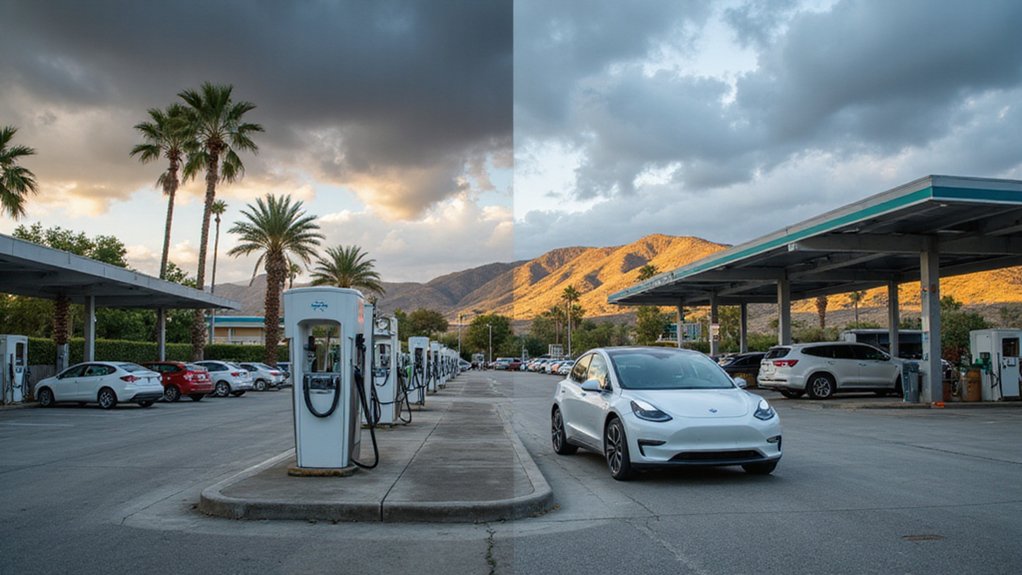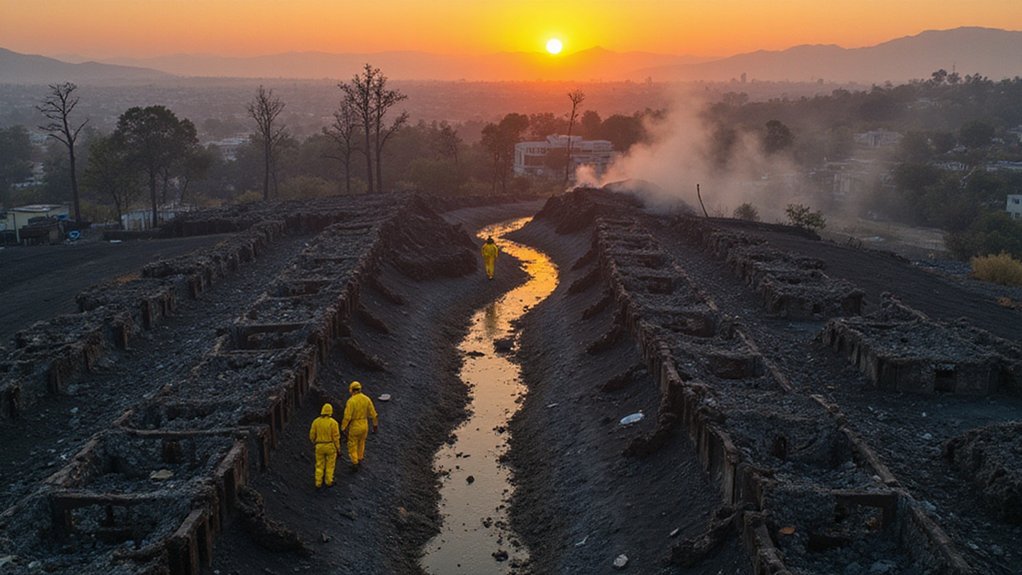The EPA’s new rule tackles a longstanding loophole that exempted pre-2015 coal ash dumps from regulation. For decades, toxic waste from these sites has seeped into groundwater, with 91% of coal plants currently contaminating water supplies. Power companies have fought these regulations, citing massive cleanup costs. The industry prioritizes profits over environmental health, naturally. The battle between utility interests and community safety continues to unfold across America’s polluted landscape.
Dozens of power companies across America are facing a new reality as the EPA tightens its grip on toxic coal ash disposal. The agency’s new rule closes a major loophole that previously exempted pre-2015 coal ash dumps from regulation. About time, honestly. These sites have been leaking poison for decades.
The stakes couldn’t be higher. Coal ash contains a cocktail of hazardous pollutants, metals, carcinogens, and neurotoxins. When dumped in unlined ponds? It seeps straight into groundwater. A staggering 91% of coal plants are currently contaminating groundwater with this toxic mess. People drink that water. Fish live in those streams.
Coal ash isn’t just waste—it’s poison seeping into our water, our ecosystems, and ultimately, our bodies.
Power companies aren’t taking this lying down. They’ve lobbied hard against stringent regulations. Georgia Power even argued for storing waste in direct contact with groundwater. Because that makes perfect sense. The utilities’ main concern? Money. Billions in potential cleanup costs have them clutching their pearls and running to state regulators for protection. Industry representatives claim these regulations must balance environmental protection with maintaining reliable energy production.
During the first Trump administration, the EPA practically handed utilities the keys to the kingdom. States took over permitting and enforcement. Companies got advance notice of enforcement actions. The agency prioritized “unleashing American energy” over, you know, protecting people from cancer-causing waste. Typical.
The scope of the problem is massive. The EPA is overseeing nearly 4,000 hazardous waste sites, many as dangerous as Superfund locations. Some require excavation, others need groundwater treatment. U.S. coal plants generate approximately 75 million tons of hazardous coal ash annually, creating an ongoing environmental crisis. It’s a mess decades in the making.
Environmental groups aren’t convinced the EPA will hold firm. They want coal ash excavated and properly stored in lined landfills, not left to contaminate drinking water supplies. They’re pushing for federal oversight because some states simply won’t enforce the rules.
Looking ahead, expect legal battles. The tug-of-war between state and federal authority continues. Meanwhile, communities near coal ash sites just want clean water. Is that really too much to ask?








